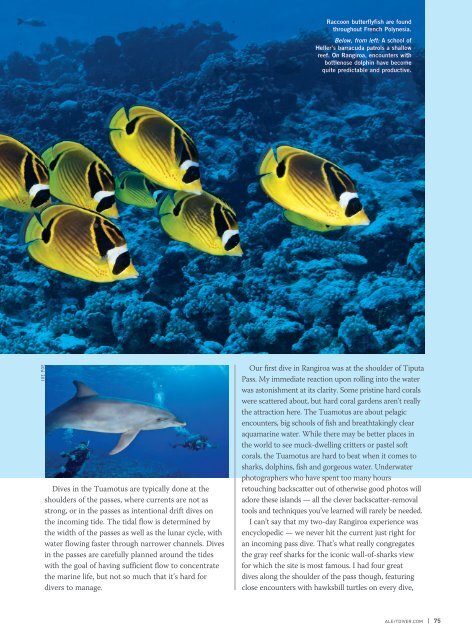AD 2017 Q3
Alert Diver is the dive industry’s leading publication. Featuring DAN’s core content of dive safety, research, education and medical information, each issue is a must-read reference, archived and shared by passionate scuba enthusiasts. In addition, Alert Diver showcases fascinating dive destinations and marine environmental topics through images from the world’s greatest underwater photographers and stories from the most experienced and eloquent dive journalists in the business.
Alert Diver is the dive industry’s leading publication. Featuring DAN’s core content of dive safety, research, education and medical information, each issue is a must-read reference, archived and shared by passionate scuba enthusiasts. In addition, Alert Diver showcases fascinating dive destinations and marine environmental topics through images from the world’s greatest underwater photographers and stories from the most experienced and eloquent dive journalists in the business.
You also want an ePaper? Increase the reach of your titles
YUMPU automatically turns print PDFs into web optimized ePapers that Google loves.
Raccoon butterflyfish are found<br />
throughout French Polynesia.<br />
Below, from left: A school of<br />
Heller’s barracuda patrols a shallow<br />
reef. On Rangiroa, encounters with<br />
bottlenose dolphin have become<br />
quite predictable and productive.<br />
JOE POE<br />
Dives in the Tuamotus are typically done at the<br />
shoulders of the passes, where currents are not as<br />
strong, or in the passes as intentional drift dives on<br />
the incoming tide. The tidal flow is determined by<br />
the width of the passes as well as the lunar cycle, with<br />
water flowing faster through narrower channels. Dives<br />
in the passes are carefully planned around the tides<br />
with the goal of having sufficient flow to concentrate<br />
the marine life, but not so much that it’s hard for<br />
divers to manage.<br />
Our first dive in Rangiroa was at the shoulder of Tiputa<br />
Pass. My immediate reaction upon rolling into the water<br />
was astonishment at its clarity. Some pristine hard corals<br />
were scattered about, but hard coral gardens aren’t really<br />
the attraction here. The Tuamotus are about pelagic<br />
encounters, big schools of fish and breathtakingly clear<br />
aquamarine water. While there may be better places in<br />
the world to see muck-dwelling critters or pastel soft<br />
corals, the Tuamotus are hard to beat when it comes to<br />
sharks, dolphins, fish and gorgeous water. Underwater<br />
photographers who have spent too many hours<br />
retouching backscatter out of otherwise good photos will<br />
adore these islands — all the clever backscatter-removal<br />
tools and techniques you’ve learned will rarely be needed.<br />
I can’t say that my two-day Rangiroa experience was<br />
encyclopedic — we never hit the current just right for<br />
an incoming pass dive. That’s what really congregates<br />
the gray reef sharks for the iconic wall-of-sharks view<br />
for which the site is most famous. I had four great<br />
dives along the shoulder of the pass though, featuring<br />
close encounters with hawksbill turtles on every dive,<br />
ALErTDIVER.COM | 75









